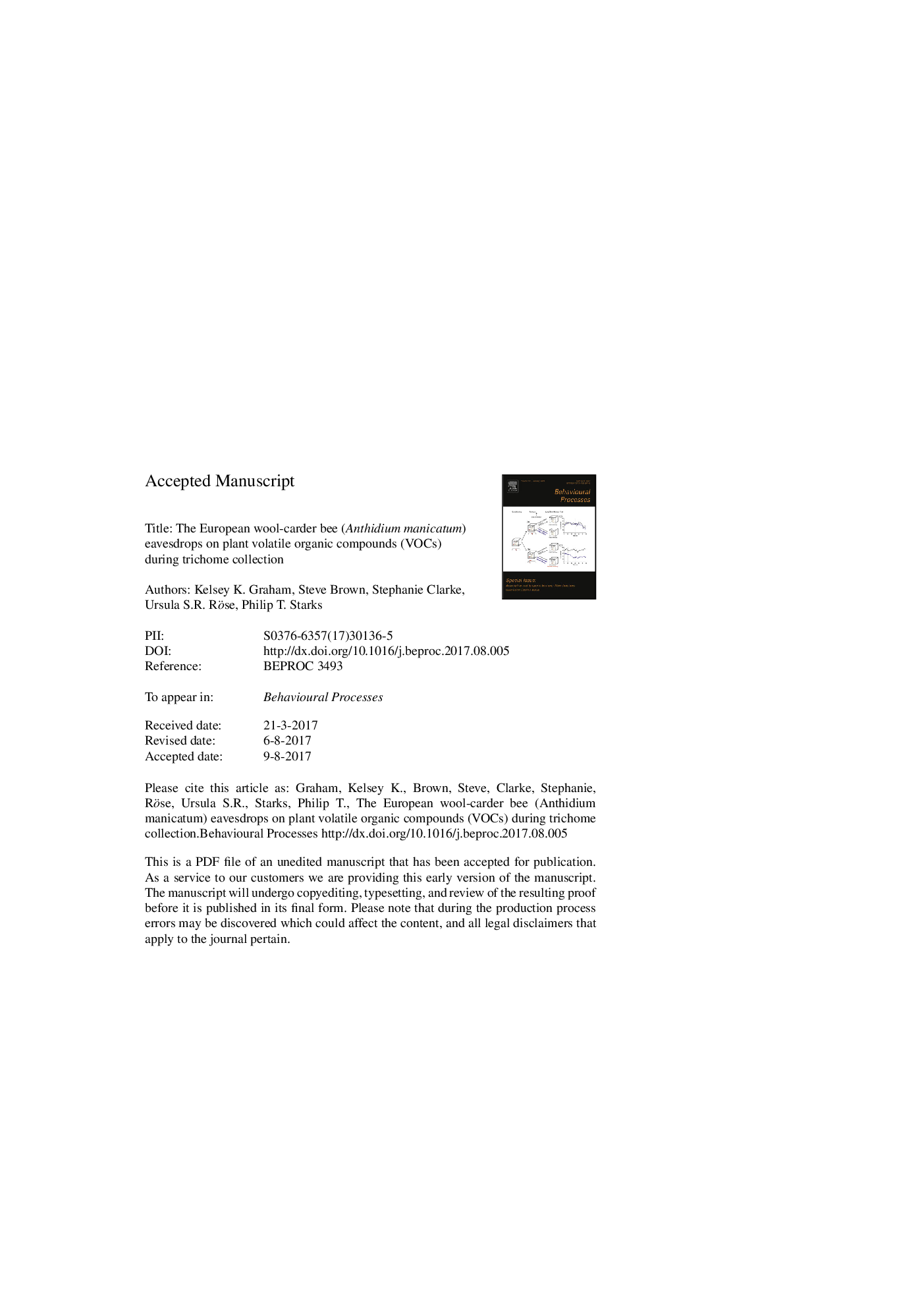| کد مقاله | کد نشریه | سال انتشار | مقاله انگلیسی | نسخه تمام متن |
|---|---|---|---|---|
| 5539713 | 1553137 | 2017 | 33 صفحه PDF | دانلود رایگان |
عنوان انگلیسی مقاله ISI
The European wool-carder bee (Anthidium manicatum) eavesdrops on plant volatile organic compounds (VOCs) during trichome collection
دانلود مقاله + سفارش ترجمه
دانلود مقاله ISI انگلیسی
رایگان برای ایرانیان
کلمات کلیدی
موضوعات مرتبط
علوم زیستی و بیوفناوری
علوم کشاورزی و بیولوژیک
علوم دامی و جانورشناسی
پیش نمایش صفحه اول مقاله

چکیده انگلیسی
The plant-pollinator relationship is generally considered mutualistic. This relationship is less clear, however, when pollinators also cause tissue damage. Some Megachilidae bees collect plant material for nests from the plants they pollinate. In this study, we examined the relationship between Anthidium manicatum, the European wool-carder bee, and the source of its preferred nesting material â Stachys byzantina, lamb's ear. Female A. manicatum use their mandibles to trim trichomes from plants for nesting material (a behaviour dubbed “carding”). Using volatile organic compound (VOC) headspace analysis and behavioural observations, we explored (a) how carding effects S. byzantina and (b) how A. manicatum may choose specific S. byzantina plants. We found that removal of trichomes leads to a dissimilar VOC bouquet compared to intact leaves, with a significant increase in VOC detection following damage. A. manicatum also visit S. byzantina plants with trichomes removed at a greater frequency compared to plants with trichomes intact. Our data suggest that A. manicatum eavesdrop on VOCs produced by damaged plants, leading to more carding damage for individual plants due to increased detectability by A. manicatum. Accordingly, visitation by A. manicatum to S. byzantina may incur both a benefit (pollination) and cost (tissue damage) to the plant.
ناشر
Database: Elsevier - ScienceDirect (ساینس دایرکت)
Journal: Behavioural Processes - Volume 144, November 2017, Pages 5-12
Journal: Behavioural Processes - Volume 144, November 2017, Pages 5-12
نویسندگان
Kelsey K. Graham, Steve Brown, Stephanie Clarke, Ursula S.R. Röse, Philip T. Starks,